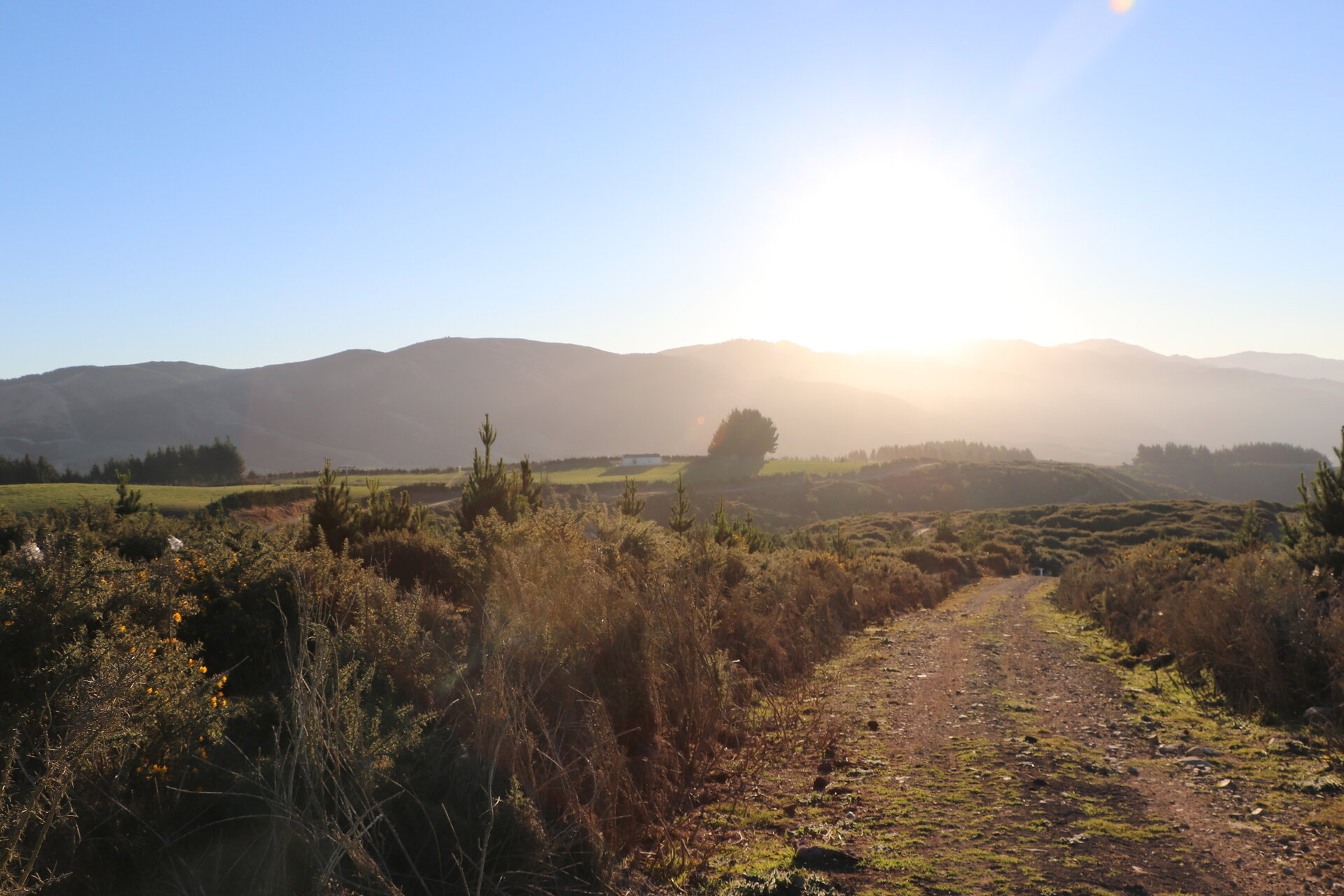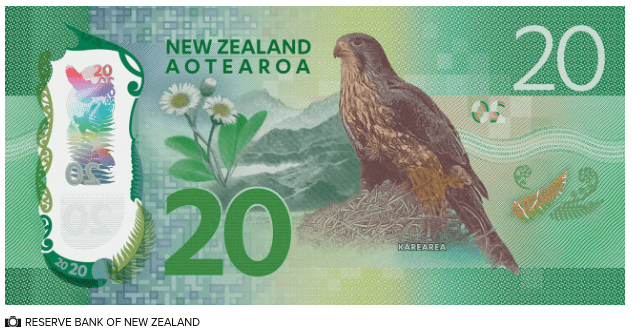New Zealand's Native Falcon
Transcript of Colin Dore's presentation - Friday 13th September 2019
The KAREAREA
(Fast flying bird of prey)
"Some of my reasons, for being so passionate about the Karearea, apart from its hunting ability; it is also close to being on the endangered species list. I have three very vivid memories that I have experienced an associated with that have helped me focus on this magnificent bird of prey
This is a bird that my father bought one home 60 years ago having shot it while on a Chukka shoot at Simmons Pass.
Many of you here tonight will no doubt be familiar with this beautiful bird, during your times in the High Country the New Zealand Native Falcon Karearea which is on the NZ $20 note.
The first impact on my thoughts for helping the Karearea
Following My Dads silliness of the time, when conservation meant little to many of our population, this was shortly after WW2.
Perhaps that became the point that I started thinking Green, I began taking a genuine interest in the beauty of the McKenzie Country. When fishing the High Country Rivers and Lakes I was always watching and listening for the Karearea. The beauty of this Falcon soaring and searching for the next meal was amazing; it is fearless in the air, with a flight speed up to 230 km/h, the screech which is for confusing prey and then the contact. I remember seeing one chasing a sparrow into and then out of a Matagouri bush the prey in its beak. Travelling up the headwaters of one of my favourite rivers, the Ahuriri to the locked gates and then, Mountain biking up to the Top Hut was always a great day’s adventure for us, which on special occasions we were privileged see the master of the skies doing its thing searching for prey.
It had been my intention that when I retired there would be space in my diary, that with some of my spare time I would be able to make more time available to assist with the research to assist the Karearea to move away from very endangered species, we follow very closely on FaceBook the Marlborough Falcon Conservation Trust and the New Zealand Raptor Trust run out of Timaru that cares for sick, injured or orphaned Raptors.
Unfortunately it is part of being in Waimate that everyone knows when you are preparing to retire and pleas of being more involved become the common conversation subject. Along with a family of three daughters, five grandchildren all requiring our support, unfortunately spare time is at a premium, along with ¾ of an acre of gardens we have now converted to all Native trees and shrubs, time has not allowed me to assist as was planned.
The second memory was one night at Rotary a very passionate conservationist and good friend of mine Bruce White came in to Rotary very excited to tell me that he had seen for the first time the Karearea down at Knottingly Park, and it was giving the non native pigeons a hard time.
Our daughter Nicole a Crown Prosecutor spoke that night to Rotary and she mentioned the enthusiasm and the excitement of Bruce’s discovery in her talk. The next day Nicole and I left for a road trip through to Fiordland, I will never forget the email that I received from Ann Denison that morning advising us that Bruce had been seriously injured at Knottingly Park.
The third memory, was when I was an employee of Alpine Energy based at that stage in Timaru
Some of you will be aware of the terrible time I had when I came upon a Karearea which had been electrocuted up at the Mt Cook substation. I had to go through the process of informing my CEO Andrew Tombs, at the time of the issue and perhaps the politics that go with my finding. I also had issues that the Karearea is an endangered species so it belongs to the State.
It was a worrying time as I personally wanted to have it mounted and then donate it to the Sir Edmund Hillary Centre at Mt Cook. In the end the bird ended up at the Timaru Museum as they have a license to hold endangered species. Unfortunately its condition was not in good enough condition for it to be mounted so in the end the Museum had it stripped and now have the skeleton preserved in safe keeping
You can go to visit the Timaru museum website give our name and what you would like to see and up pops in photos the final result preserved.
I would like to add that Andrew Tombs was very understanding and was prepared to assist me with the Taxidermy costs if the process was to proceed
Some facts and figures
There are three derivatives of the same species
The Bush Falcon found in the lower North Island, Marlborough and the West Coast.
The Southern Falcon found in Fiordland, Stewart Island and the Sub Antarctica Islands.
And the Eastern Falcon which occupies most of the South Island, East of the main divide, the Karearea are now being seen around the Hunter Hills, Mt. John, Te Kiteroa and into Knottingly Park. With remains of the fallen trees on the hills it has become a perfect habitat for Karearea to establish a colony of the masters of the air
The flight speed is estimated at 230km/h
Eye sight is six to eight times more powerful than the humans
No doubt many of you can vouch for the fact that they are the meanest Falcon at nesting time becoming very aggressive.
They are sexually Dimorphic the males weigh 350/400grams a third smaller than the female weighing 700/750grams. tercel is the name for the male meaning 1/3 particularly in Falcon lingo, they are thought to mate for life.
And do as they are told.
Karearea nest is a “scrape on the ground” usually under a bivvy type rock out crop north facing slope and with an elevated view and within 100/150m from a stream where there is small prey small birds such as chukka, and yes Black stilt, Rabbits, Hares, Lizards and Dragon flies. The male’s particularly in winter will resort to eating carrion ie road kill rabbits/hares and if there is an opportunity dog tucker or carcases left unattended they will also eat road metal/grit (rangle for their crops)
Courtship generally begins in September with eggs laid in October generally 2 to 4 eggs, breeding pairs are usually adult birds, but some one year old females may also breed both parents share the incubation the fledglings are on their own after 35/40 days old in mid January.
When researching some facts for this evening, I have become aware that there are four native raptors in New Zealand, the North Island Falcon, the Southern Falcon, and the Eastern Falcon and the Morepork Owl “ruru” meaning known for the melancholic sound that they make
The threat to the species is the stoat, rodents, hedge hogs; secondary poisoning from planned pesticide drops an electrocution from power line strikes.
Do take the time to watch these magnificent birds in flight and when they have prey in their target zone it is truly amazing the screeching as it confuses its prey and agility is just perfect poetry in motion. In discussion with some of our local Folks it is apparent and encouraging that perhaps there is greater numbers of the Karearea about, I have had reports that Kelceys Bush has a small colony and they have been seen with juveniles, other sightings reported Elephant Hill area, Green hills rd area, Stonewall area and as mention previously Knottingly Park area, there has been Black stilts using Martyn Jensen’s property as a habitat so they will need to be wary.
In summary it is very encouraging and a great positive for our district to have Gary and Ann in our community. Whom have the vision and confidence to donate the land to the Trust to manage this initiative which in the first instance will encourage our younger generations to appreciate our native wild life and fauna, and understand the damage that the imported predators can do to our native wild life and fauna.
A quote I read some time ago was “if you want to change the world, teach our young ones to understand what has happened and they will change it “
Pauline and I are members of the Orokanui Wild Life Sanctuary, and the work that has gone into that project is amazing, we just need to keep in mind that a small energetic positive group had a vision and the results are absolutely amazing. I look around this room and all attending know that our project will succeed; this is another positive for our native animals and plants and again our proud and growing district.
At this point I would like to acknowledge Dr. Donna Falconer who sometime ago freely offered her research notes in assisting me to present the facts and figures"
- Colin Dore

